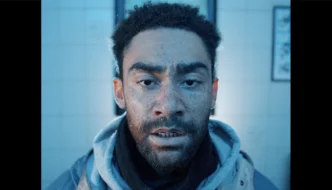Despite Manchester’s emergence as a major cultural and economic force in the UK, there still exists a huge disparity in wealth within the region. One of the most notable ways this manifests itself is in the city’s growing homeless population. Although this increase has received attention in mainstream news outlets, the under-representation of individual homeless people within the media means that insights into their internal worlds are limited, resulting in further dehumanisation. Using physical objects as its springboard, Objectified makes visible the experiences of its collaborators – all of whom are homeless, or have been homeless at some point – told in their own words to create a deeply personal piece of theatre.
Curated and staged by the Museum of Homelessness, Objectified commits itself to being both interactive and democratic, with the input of the audience welcomed before and after the performance. The audience are seated in traverse, with the two rows of seats back to back, in a space that mimics a doctors’ surgery. Facing the walls of the waiting room, adorned with the familiar signs about waiting times and public health notices, this configuration provokes a sense of vulnerability. Rather than seated at a safe distance from the performance, and grouped together as a distanced, homogenous whole, the absence of other audience members from our immediate sightlines prompts an awareness of one’s own subject position. This awareness displaces the comfort of being a passive viewer, instead rendering visible the individual gaze as an active force within the performance.
This initial self-awareness sets the tone for the rest of the performance, which works to circumvent the voyeurism that often accompanies theatre involving marginalised groups of people. Led into another performance space, we are invited to interact with the objects, which are placed on podiums around the room. Rather than left to gaze at these objects privately, the performers watch us as we circle the room, reinforcing the sense of one’s own presence within the space. Although the objects are varied – they range from a circle of blue inhalers, to a syringe, to a cigarette packet to a prosthetic leg suspended from the ceiling – a generalised theme of the medical and pharmaceutical can be discerned. In this light, the previous setting of the GP surgery becomes clearer, highlighting the significance of medical care as a particularly pressing concern amongst homeless people.
Indeed, this concern is reflected in the monologues, which discuss the barriers faced by homeless people trying to access various health services. These are delivered in the exact words of the collaborators; each performer wears a headset playing a recording of a homeless person interviewed for the piece, meaning the exact rhythms and cadences of their voices are replicated. Rather than attempting to rephrase the accounts of the participants – which inevitably raises issues of misrepresentation – Objectifed’s commitment to speaking their words verbatim allows their distinct voices to shine through. Although the execution of this is a little awkward at times, this is forgivable as spontaneous speech is often erratic in its rhythm, and these momentary lags do not detract from the potency of the piece as whole. Through this unique performance style, Objectified circumvents the ethical difficulties of having a homeless actor perform live whilst still allowing the collaborators to tell their story in their own words, retaining control of the narrative.
Although the stories behind two of the objects – the nit comb and the dentures – are from homeless participants, the story of the prosthetic leg consists of an explanation by a medical professional of the specific difficulties homeless amputees face. This more distanced, informative perspective, delivered in the same manner as the personal accounts, delineates the status of the medical professional and the homeless collaborators as equally valid perspectives. Through this equivalency, the performance avoids simply delivering a tragic, titillating picture of homelessness, instead presenting both the personal and the informative on the same continuum, as parts constitutive of the wider conversation surrounding homelessness.
As well as being an important piece of consciousness-raising theatre, Objectified is also a piece of academic research. Neuroscientist Dr Lasana Harris from UCL oversees the performance, answering questions and inviting the audience to take part in his research. The inclusion of the survey about perceptions of the homeless gives the piece a sense of reciprocity, with the opinions of the audience actively constituting part of the performance itself, enabling it to grow and develop, rather than remaining stagnant. This sustained interactivity allows Objectified to flourish as sensitive, well-considered piece of theatre that conveys the individual personalities of its participants without veering into voyeurism or sensationalism.
Find out about Objectified and other upcoming projects at the Museum Of Homelessness here and see the full film made by Dorothy Allen-Pickard for Objectified here
Filed under: Art & Photography, Theatre & Dance, Written & Spoken Word
Tagged with: homelessness, museum of homelessness, objectified






Comments